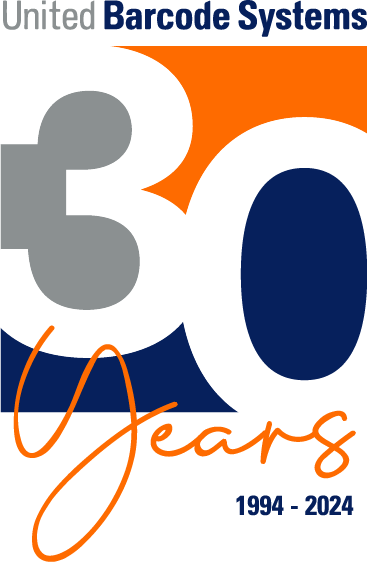Sustainability and traceability are two of the key factors transforming European industry in the coming years. In this context, the Digital Product Passport (DPP) is becoming a cornerstone of the European Union’s strategy to promote a circular economy, reduce waste, and ensure transparency throughout the supply chain.
Although not all companies have implemented it yet, the DPP will soon impact how products are coded and labeled — both in production and in logistics and distribution. In this article, we explain what it is, how it works, and how United Barcode Systems (UBS) can help your company adapt to this new regulation.
What Is the Digital Product Passport (DPP)
The DPP is a digital record that accompanies a product throughout its entire lifecycle. It contains detailed information about its composition, materials, origin, and technical specifications, as well as data on sustainability, recyclability, and regulatory compliance.
The goal of the DPP is to enable full transparency and traceability, giving manufacturers, distributors, recyclers, and consumers access to reliable information about the product. This not only ensures compliance with EU regulations but also builds consumer trust and improves efficiency in recycling and reuse processes.
Why It Matters for Your Business
Implementing the DPP is not just a regulatory requirement — it has direct implications for how production and logistics are managed:
- Complete traceability: Each product unit can be tracked from manufacturing to sale or recycling.
- Regulatory compliance: Companies must ensure all product information is available and up to date.
- Process optimization: DPP data enables faster, more accurate decisions across the supply chain.
- Reputation and consumer trust: Customers increasingly value transparency about product origin and sustainability.
In this scenario, having modern coding and labeling systems becomes a key differentiator, allowing companies to generate and manage all DPP-related information quickly and accurately.
How the DPP Relates to Industrial Coding and Labeling
The DPP requires that each product carry a unique identifier providing access to all its digital information. This identifier is typically represented by a DataMatrix, QR, or alphanumeric code, printed directly on the packaging or applied via a label.
To achieve this, labeling and coding equipment must meet strict criteria — speed, precision, and reliability — even on high-volume production lines. This is where United Barcode Systems plays a vital role:
- APL 35S by United Barcode Systems: Ideal for printing and applying labels on boxes, trays, and bags with high precision and multiple positioning options, ensuring each unit carries its DPP code.
- APL 80 by United Barcode Systems: Designed for full-pallet labeling, ensuring DPP data is available even during logistics and storage.
- APLINK HRX: A high-resolution direct-printing system for boxes and packaging that generates unique codes quickly and reliably, embedding the information required to comply with DPP standards.
Thanks to its compatibility with UBS LABMAN, these systems can connect to enterprise software (ERP, WMS, MES) to automatically generate, record, and transmit each code’s data to the DPP database. Meanwhile, UBS DESIGNER simplifies the creation of complex codes and labels, ensuring all required data is properly integrated and fully legible.
Steps to Implement the DPP in Your Production Line
- Assess your products and packaging: Identify which information must be included in each digital passport.
- Select the right equipment: Determine which labeling or direct-printing systems best fit your product type and line speed.
- Integrate with management software: Connect equipment with UBS LABMAN and ERP/WMS systems to ensure real-time traceability.
- Design codes and labels: Use UBS DESIGNER to create DataMatrix or QR codes containing all DPP information.
- Run pilot tests: Validate that codes are readable and that data is transmitted correctly to the database.
- Scale to full production: Automate data and labeling flows, minimizing interruptions and errors.
With a gradual approach, companies can integrate DPP coding without halting production, ensuring both compliance and efficiency from day one.
Adapt Your Production to the Era of the Digital Product Passport
The Digital Product Passport (DPP) will redefine how products are coded, labeled, and tracked across Europe. Beyond being a regulatory requirement, it represents an opportunity to optimize processes, enhance traceability, and strengthen consumer trust.
Solutions such as the APL 35S by United Barcode Systems, APL 80S by United Barcode Systems, and APLINK HRX, together with UBS LABMAN and UBS DESIGNER software, enable companies to implement the DPP efficiently — ensuring that every product carries the right digital information without stopping production.
Secure your labeling and coding line for the future of European industry with reliable, precise, and fully integrated solutions.
Contact our team to discover how we can help you implement the Digital Product Passport in your production process.






